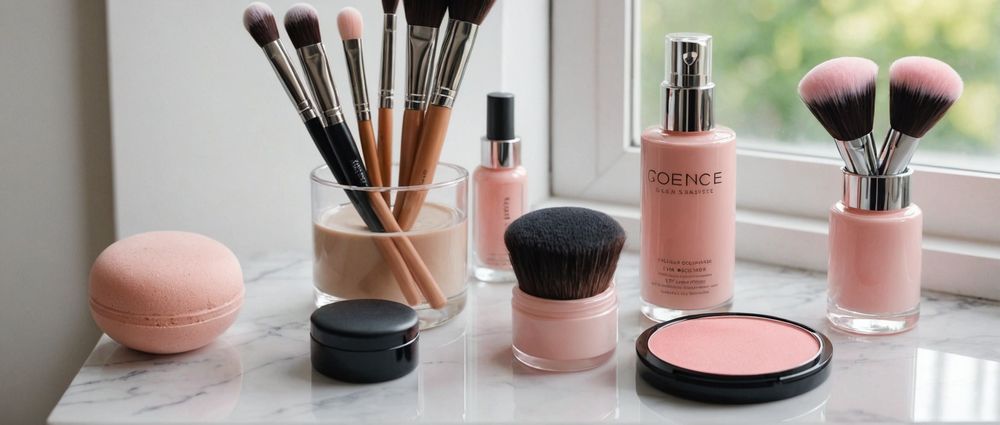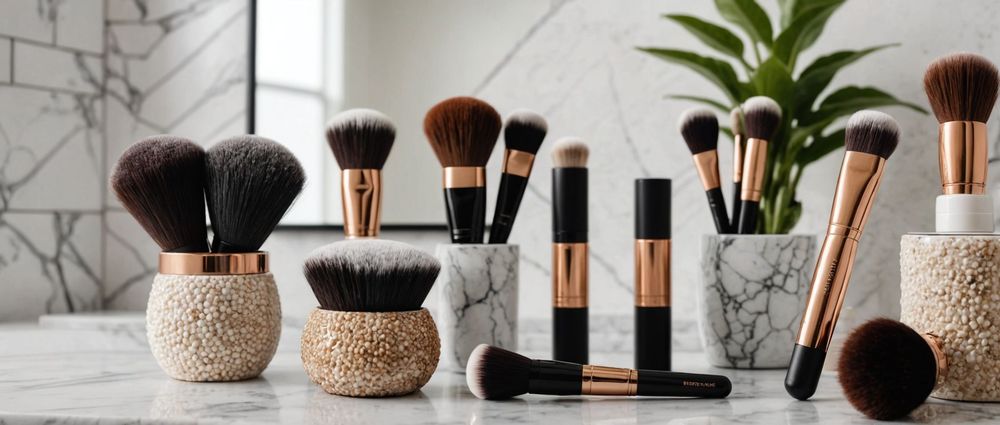When it comes to applying foundation, the type of brush you use can dramatically affect your makeup’s finish and longevity. Foundation brushes come in various shapes, sizes, and bristle types, each designed to achieve specific looks and coverages. Understanding the different types of foundation brushes can help you enhance your makeup application, ensure a flawless look, and ultimately choose the right tool for your beauty routine. In this article, we will explore the various types of foundation brushes, their unique purposes, and how to select the one that best suits your needs.
1. Flat Foundation Brushes

Flat foundation brushes are characterized by their paddle-like shape, enabling them to evenly distribute liquid or cream foundation across the skin. They typically have synthetic bristles that help with smooth application and blending. This type of brush is particularly effective for applying liquid foundations, as it can cover larger areas quickly. Due to their design, flat foundation brushes excel in achieving a streak-free finish, making them a staple in many makeup bags.
Reasons to consider flat foundation brushes include:
- Even coverage over large areas
- Ideal for liquid and cream foundations
- Ability to build coverage without heavy layering
- Streak-free finish for a natural look
2. Dome-Shaped Foundation Brushes

Dome-shaped foundation brushes are designed with rounded bristles that taper to a point, allowing for precision in application. They are particularly good for blending foundation into hard-to-reach areas, such as around the nose and under the eyes. Their versatile shape makes them suitable for a wide range of foundation types, including liquids, creams, and even powders. Many users favor dome-shaped brushes due to their ability to deliver a more airbrushed, flawless finish.
Key benefits of dome-shaped foundation brushes include:
- Versatile for various foundation types
- Great for targeted application and blending
- Helps achieve a flawless, airbrushed look
- Ideal for layering products for added coverage
3. Stippling Brushes
Stippling brushes are unique due to their dual-layer bristle design, with a flat top comprised of short and long bristles. This design allows for a stippling or “dotting” technique, which creates an illusion of airbrushed skin. These brushes are particularly effective at blending foundations, especially when you want a sheer finish. Stippling brushes can be used with not only foundation but also cream blushes and highlighters for a soft, diffused look.
Reasons to love stippling brushes:
- Ideal for sheer and buildable coverage
- Great for a soft, diffused application
- Versatile for foundation, blush, and highlighter
- Suitable for both liquid and cream formulas
4. Angled Foundation Brushes
Angled foundation brushes are designed with slanted bristles that fit comfortably against the contours of the face. This shape is particularly useful for applying foundation along the cheekbones, around the jawline, and even for contouring. They provide excellent control, allowing for precise application while blending seamlessly into the skin. Angled brushes are versatile and can also be used for foundation types ranging from liquids to creams, making them a multifunctional tool in your makeup kit.
Benefits of using angled foundation brushes include:
- Customizable contouring and highlighting
- Precision application for defined areas
- Comfortable fit for facial contours
- Versatile for various foundation types
5. Buffing Brushes
Buffing brushes are typically dense, rounded brushes designed to deposit foundation onto the skin and buff it out for a polished finish. Their thick bristles allow for flawless blending, making them ideal for users who prefer a heavy coverage look. Buffing brushes work exceptionally well with liquid and cream foundations as they can evenly distribute product while helping to blend it seamlessly into the skin. This results in a smooth, even complexion that feels light and comfortable throughout the day.
Why you should consider a buffing brush:
- Creates a natural-looking finish
- Perfect for heavy coverage applications
- Effective for liquid, cream, and powder foundations
- Fast application and blending process
Conclusion
Choosing the right foundation brush can make a significant difference in your makeup application. From flat and dome-shaped brushes to stippling, angled, and buffing brushes, each type serves a unique purpose and caters to different foundation formulations. Knowing the special features and benefits of each brush can empower you to select the best tool for your personal makeup routine. Remember, a good foundation brush can elevate your makeup game and help you achieve that coveted flawless finish.
FAQs
1. What is the best type of foundation brush for beginners?
Flat foundation brushes are usually the best choice for beginners because they are easy to use and provide even coverage.
2. Can I use a foundation brush for powder foundations?
Yes, buffing brushes and some dome-shaped brushes work well with powder foundations for a seamless application.
3. How do I clean my foundation brushes?
Clean your foundation brushes regularly using a gentle brush cleanser or mild soap and warm water, rinsing thoroughly and allowing them to air dry.
4. What type of foundation brush gives the best coverage?
Buffer brushes provide the best coverage as they allow for buildable application and even distribution of the foundation.
5. Can I use a foundation brush for contouring?
Yes, angled foundation brushes are great for contouring, helping you achieve defined cheekbones and jawlines with seamless blending.